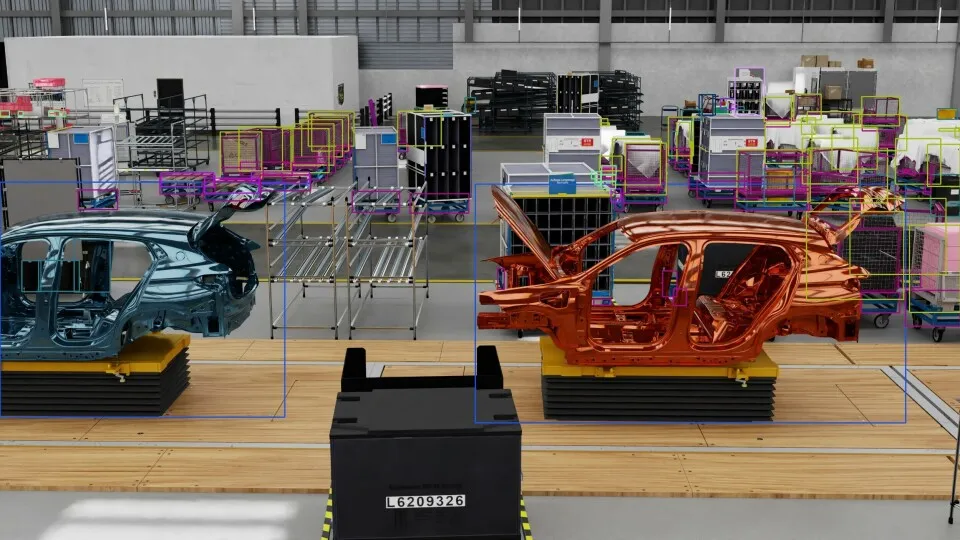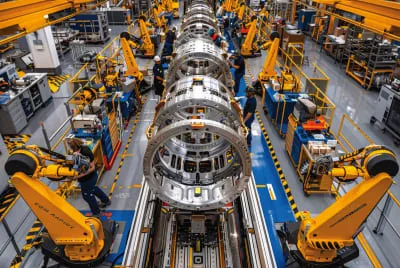
Innovations in Automotive Assembly Robots for Smart Factories
The automotive industry is undergoing a profound transformation, driven by the integration of advanced robotics and smart factory technologies. Modern assembly robots are no longer mere automated tools but intelligent systems capable of adapting, learning, and collaborating with human workers. This evolution is crucial for meeting the demands for customization, efficiency, and sustainability in today's competitive market.
Advanced Sensing and Vision Systems
One of the most significant advancements in automotive assembly robots is the integration of sophisticated sensing and vision systems. These technologies enable robots to perceive their environment with unprecedented accuracy, allowing for more precise and flexible operations.

Modern vision systems incorporate 3D cameras, laser scanners, and artificial intelligence to identify parts, detect defects, and guide robotic movements. This capability is particularly valuable in tasks such as windshield installation, door panel alignment, and wiring harness assembly, where millimeter-level precision is required.
Key Benefits of Advanced Sensing:
- Improved quality control through real-time defect detection
- Reduced cycle times with faster part recognition and handling
- Enhanced flexibility to handle product variations without reprogramming
- Increased safety through obstacle detection and collision avoidance
Collaborative Robotics (Cobots) in Assembly Lines
The introduction of collaborative robots, or cobots, has revolutionized human-robot interaction in automotive assembly plants. Unlike traditional industrial robots that operate in isolated cages, cobots are designed to work safely alongside human workers, combining the strength and precision of machines with the problem-solving abilities of humans.

In modern automotive factories, cobots are increasingly deployed for tasks that require dexterity and judgment, such as installing interior components, applying adhesives, and performing quality inspections. These robots are equipped with force-limiting technology and sensitive skin sensors that immediately stop operation upon contact with humans.
| Feature | Traditional Industrial Robots | Collaborative Robots (Cobots) |
|---|---|---|
| Safety Requirements | Require physical barriers or safety cages | Can operate alongside humans without barriers |
| Programming Complexity | Complex programming often required | Intuitive programming, often by demonstration |
| Flexibility | Designed for high-volume, repetitive tasks | Easily redeployed for different tasks |
| Payload Capacity | Typically higher payloads (50kg+) | Generally lower payloads (3-15kg) |
| Implementation Cost | Higher initial investment | Lower initial investment |
Artificial Intelligence and Machine Learning Integration
Artificial Intelligence (AI) and Machine Learning (ML) are transforming automotive assembly robots from programmed machines to cognitive systems. Through AI algorithms, robots can now optimize their own performance, predict maintenance needs, and adapt to changing conditions in real-time.
Predictive Maintenance
AI-powered predictive maintenance systems analyze data from robot sensors to identify patterns that indicate potential failures. This allows manufacturers to schedule maintenance during planned downtime, reducing unexpected breakdowns and increasing overall equipment effectiveness (OEE).
Adaptive Process Control
Machine learning algorithms enable robots to continuously improve their operations based on historical performance data. For example, welding robots can adjust parameters in real-time to compensate for material variations, while painting robots can optimize spray patterns to ensure consistent coverage.

Digital Twin Technology
Digital twin technology creates virtual replicas of physical assembly lines, allowing manufacturers to simulate, analyze, and optimize robotic operations before implementing changes in the real world. This innovation significantly reduces commissioning time and enables continuous improvement without disrupting production.
Through digital twins, engineers can test new robot configurations, optimize cycle times, and identify potential bottlenecks in the assembly process. The technology also facilitates remote monitoring and troubleshooting, enabling experts to support operations from anywhere in the world.
| Application Area | Benefits | Implementation Examples |
|---|---|---|
| Line Design and Layout | Reduced commissioning time by up to 30% | Virtual simulation of robot reach and collision detection |
| Process Optimization | Cycle time reduction of 15-20% | Motion path optimization and sequencing improvements |
| Maintenance Planning | 30-40% reduction in unplanned downtime | Predictive maintenance scheduling based on virtual performance data |
| Training and Skills Development | 50% faster operator training | Virtual reality training modules for robot programming and operation |
Mobile Robotics and Autonomous Guided Vehicles
The integration of mobile robotics and Autonomous Guided Vehicles (AGVs) is creating more flexible and responsive assembly environments. These systems can transport components between workstations, deliver tools to operators, and even perform assembly tasks at multiple locations within the factory.

Modern AGVs use advanced navigation technologies such as LiDAR, computer vision, and simultaneous localization and mapping (SLAM) to move safely through dynamic factory environments. They can communicate with stationary assembly robots and production control systems to ensure just-in-time delivery of components, reducing inventory and floor space requirements.
Connectivity and Industrial Internet of Things (IIoT)
The Industrial Internet of Things (IIoT) has enabled unprecedented connectivity between assembly robots and other systems within smart factories. Through sensors, cloud computing, and data analytics, manufacturers can monitor robot performance in real-time, optimize energy consumption, and coordinate complex assembly processes across multiple stations.
Key IIoT Applications in Robotic Assembly:
- Real-time performance monitoring and KPI tracking
- Remote diagnostics and troubleshooting
- Energy consumption optimization
- Supply chain integration for just-in-sequence part delivery
- Quality data collection and traceability
Future Trends and Developments
The evolution of automotive assembly robots continues to accelerate, with several emerging technologies poised to further transform manufacturing processes:
5G-Enabled Robotics
The implementation of 5G networks in factories will enable ultra-reliable, low-latency communication between robots, allowing for more coordinated operations and real-time response to production changes.
Swarm Robotics
Multiple simple robots working together in swarms could replace complex single-purpose machines, offering greater flexibility and resilience in assembly operations.
Human-Robot Brain-Computer Interfaces
Emerging research in brain-computer interfaces may eventually allow human operators to control robots through thought, creating entirely new paradigms for human-robot collaboration.

Conclusion
The innovations in automotive assembly robots are fundamentally reshaping the manufacturing landscape, enabling smarter, more flexible, and more efficient production systems. As technologies like AI, IIoT, and collaborative robotics continue to evolve, they will further blur the lines between physical and digital manufacturing, creating opportunities for unprecedented levels of customization, quality, and sustainability in the automotive industry. The factories of the future will be characterized by seamless human-robot collaboration, data-driven optimization, and adaptive production systems that can respond instantly to changing market demands.
